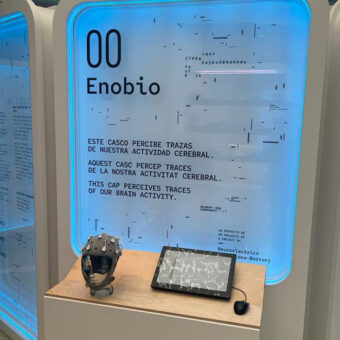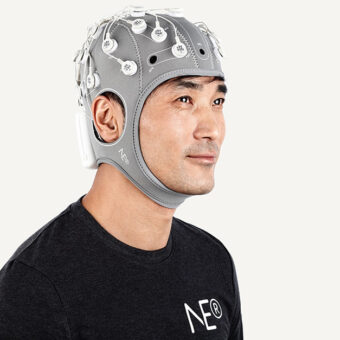In my last post I started with a quote from “The Matrix”. Here I would like to go a bit further and make a quick review of the top coolest applications of BCI and Neurostimulation that we often see (and sometimes give for granted) in popular movies.
Neurostimulation and awesome virtual reality
From my point of view, one of the most underrated sci-fi writers is Philip K. Dick. Many movies are based on his short stories, and precisely “Do Androids Dream of Electric Sheep?” (1968) is one of his best works. The great and famous movie “Blade Runner” (1982) is loosely based on this book. As it often happens, the movie skips many important points of the book, and in particular it misses to show the desolation future-day earth is living on. In the book to keep the humans happy, an invention called the Mood Organ Device is commonly used. It is a super precise neurostimulator than can elicit whatever mood you’d like to feel. We are still far away from such a precise device, but neurostimulation is already being used for mood enhancement. Mr. Dick, indeed you thought ahead of your time!
Both in the movie and in the book, the android’s bounty hunters (i.e. blade runners) often apply the “empathy test” to reveal the true nature of androids that believe they are humans. By using emotion detection, biometric systems and a little bit of psychology, an android can hardly fool Harrison Ford when he applies this test.
More movies based on Philip K. Dick include “Total Recall”, “Minority Report”, “Screamers”, “Paycheck”, “A Scanner Darkly”, and “The Adjustment Bureau”.
In some other movies we can find some nice examples of neurostimulation aimed to erase particular memories such as in “Eternal Sunshine of the Spotless Mind”, in which Jim Carrey decides to forget about his ex-girlfriend after an unbearable break-up.
Another funny example can be found in the “Men in Black” franchise with the famous Neuralyzer, an alien tool to clear short-term memory so people can be fooled about the existence and presence of alien life on Earth. It is also funny to see how the neuralyzer’s size decreases in time and becomes more portable. In the 3rd release, our hero travels back in time to the sixties and an old version of the neuralyzer as big as a room can be seen. Alien technologies also seem to follow Moore’s law.
More advanced sci-fi gadgets allow us not only to selectively erase memories, but also to implement them, with “The Matrix” saga as one of the most notorious examples. , In the movie, all non-free human beings are connected to the Matrix, the coolest immersive virtual reality platform ever.

Similar technology can be found in “eXistenZ” where electronic game consoles have been replaced by organic ones attached to the players’ spines through bio-ports using umbilical cords. Another cool example of a fully immersive virtual reality system.
Another good movie is “Strange Days”. In this one a type of camera called allows to record events directly from the viewers cerebral cortex. That in itself is cool, but when you play back this video you can not only see, but also feel the recorder’s sensations and memories. A pretty good and precise neurostimulator I would say.
BCI and Exoskeletons
Many movies use exoskeletons because … they are quite cool. Some of them go a bit further creating cyborgs and implanting artificial limbs controlled by BCI-type technologies.
The best example for me is the original “RoboCop” from 1987. Half-machine half-human, he’s the perfect cop to enforce the law. Some quite impressive scenes have been included in the new remake released in 2014 where we see how little of the original human is left when the electronic parts are removed.
Some other examples include Dr. Octopus from “Spiderman” and “Elysium”. In this last one,our dying hero uses neural interfaces are used to control an exoskeleton as well as to store and retrieve information from human brains.
Others examples include “Iron Man”, “The Matrix” (exoskeletons used by free-humans in real earth) and “Edge of tomorrow”. In these cases the BCI part is not very clear and the exoskeletons might be controlled by other means.
Too weird to be classified
This original and complex movie deserves a special section. I am talking about “Inception”.
In the movie, some people called “extractors” use a technique that allows them to literally enter into the dreams of target people with the purpose of stealing corporate information or to plant ideas in other’s people subconscious (the act of inception). The funny thing is that these people can also get into a dream, then dream they are dreaming and (as never done before!), having a dream in which they dream they are dreaming. Here is when things get complicated… but the movie is quite interesting and I recommend you to see it at least twice or three times.
From a neuroscience point of view, it would be fascinating to have access to that device. They don’t really explain the physics behind it, but whatever it is, it’s extremely non-invasive and portable…
To a certain extent it seems to me that some of the things that are sci-fi today will probably become a reality sooner than expected, as I mentioned in my previous post about the Singularity. Some of the above ideas can already be done nowadays, although maybe not with the same “precision”. In a future post, I would like to go deeper into the present available technologies.
Finally, I am aware I am missing some really great sci-fi movies (“Avatar”, “Surrogates”, …) but in order to keep this post readable I had no other choice but to skip them. Please leave a comment with interesting movies you think I should have mentioned and I’ll be happy to discuss them with you!
Stay tuned and see you next time!
Photo credit: Warner Bros & Blade Runner Partnership




